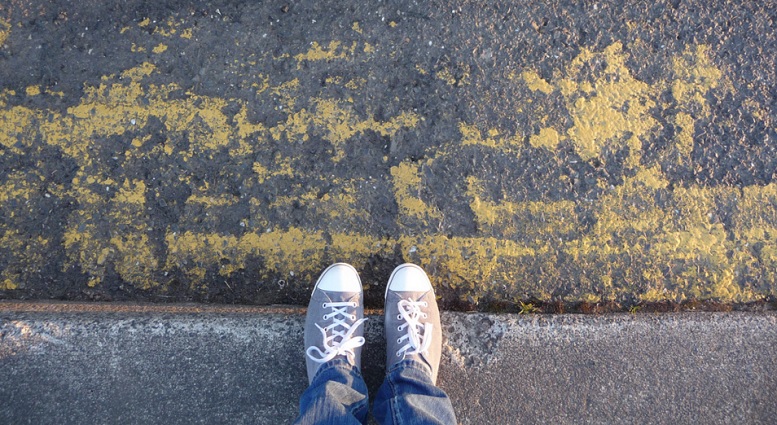Roughly 40 percent of Newark households don’t own a car, so many students in the city walk to school. And thanks to the federal Safe Routes to School (SRTS) grant program, Newark streets are becoming safer for walking.
Under the guidance of Meadowlink, Voorhees Transportation Center, New Jersey Department of Transportation and Tri-State Transportation Campaign, local community groups partnered with select Newark schools to create safer, more walkable streets for residents both school-aged and beyond. Those partnerships included La Casa de Don Pedro with Dr. William Horton Elementary School and McKinley Elementary School; the Ironbound Community Corporation with Hawkins Street Elementary; and the Urban League of Essex County with Thirteen Avenue/Dr. MLK School, Sussex Avenue Renew Elementary School and Camden Street Elementary School.
The partners worked with each of the six schools to create Safe Routes to School Travel Plans (STP), which are comprehensive resource guides for increased walking and biking to school. The guide uses walkability assessments of road conditions along main routes used by students and covers the five “E”s of SRTS: education, encouragement, enforcement, evaluation and engineering. The STP is an essential component for all SRTS grant applications in New Jersey (the solicitation process of which is underway — deadline is June 27, 2016).
Encouraging more students to walk or bike to school is especially important in Newark, where just 30 percent of children ages 3 to 18 are physically active for 60 minutes each day. Increasing students’ daily physical activity can reduce the risk of obesity and chronic disease. Newark already has a high rate of childhood obesity: 45 percent of Newark’s 3 to 5 year-olds are overweight or obese, compared to 21 percent nationally, and 47 percent of Newark’s 6 to 11 year-olds are overweight or obese, versus 36 percent nationally.
In urban areas like Newark, the needs of communities extend beyond traffic safety: Newark is safer than only 11 percent of other U.S. cities, so the Newark Police Department is an essential partner in the city’s SRTS efforts.
Common observations across the range of school travel plans include damaged sidewalks, missing crossing signals, a lack of pedestrian refuge islands and speed enforcement, excessive litter, abandoned buildings and lots, and sidewalks that were impassable after snow storms. Here are some of the key recommendations from each school’s plan:
Dr. William Horton Elementary School
- Repair damaged sidewalks and stripe crosswalks at intersection of Park and Fourth Avenues
McKinley Elementary School
- Repair damaged sidewalks and stripe crosswalks on Clifton Avenue, Sixth Avenue, Park Avenue, Garside Street, Stone Street, Cutler Street and Dr. MLK Jr. Boulevard
Hawkins Street Elementary School
- Install pedestrian crossing signals at Ferry Street-Brill Street intersection
- Ask Newark Police Department to put up speed radar signs on Raymond Boulevard to minimize speeding and enforce speed limits
- Build pedestrian islands in the middle of Raymond Blvd. to shorten crossings
Thirteenth Avenue/Dr. MLK Jr. School
- Repair damaged sidewalks and stripe crosswalks on Eleventh Avenue, South Twelfth Street, South Orange Avenue, Eighth Street, Ninth Street, and Nineteenth Avenue
- Collaborate with activists in Fairmount district (a Promise Neighborhood) to improve safety, housing, education, transportation, healthcare and the economy for residents
Sussex Avenue Renew Elementary School
- Repair sidewalks on Sussex Avenue, First Street and Fourth Street
- Install street lighting at Fourth Street-Central Avenue and Fourth Street-Dickerson Street intersections
- Stripe crosswalks and stop bars at intersections of Sussex Avenue and First Street, Fourth Street and Dickerson Street, Fourth Street and Central Avenue, First Street and Sussex Avenue, and First Street
- Restripe I-280 ramps
Camden Street Elementary School
- Repair sidewalks on Fairmount and Fifteenth Avenues
- Install pedestrian crossing signals, especially at South Tenth Street and Sixteenth Avenue
- Install speed limit and school zone signs on South Tenth Street and Fifteenth, Sixteenth and Fairmount Avenues
- Stripe crosswalks and stop bars at intersections of South Tenth Street and Sixteenth Avenue, Sixteenth Avenue and Fairmount Avenue, Fifteenth Avenue and South Seventh Avenue
- Restripe Fifteenth and South Sixth Avenues
Fortunately, some of these improvements could be included in this year’s solicitation for SRTS infrastructure grants. Tri-State will continue to work with community partners and other stakeholders to ensure Newark’s streets safely accommodate walking to school.


[…] that have SRTS education and encouragement initiatives saw a 25 percent increase in walking and biking to school over a five-year period. Active […]
[…] that have SRTS education and encouragement initiatives saw a 25 percent increase in walking and biking to school over a five-year period. Active […]